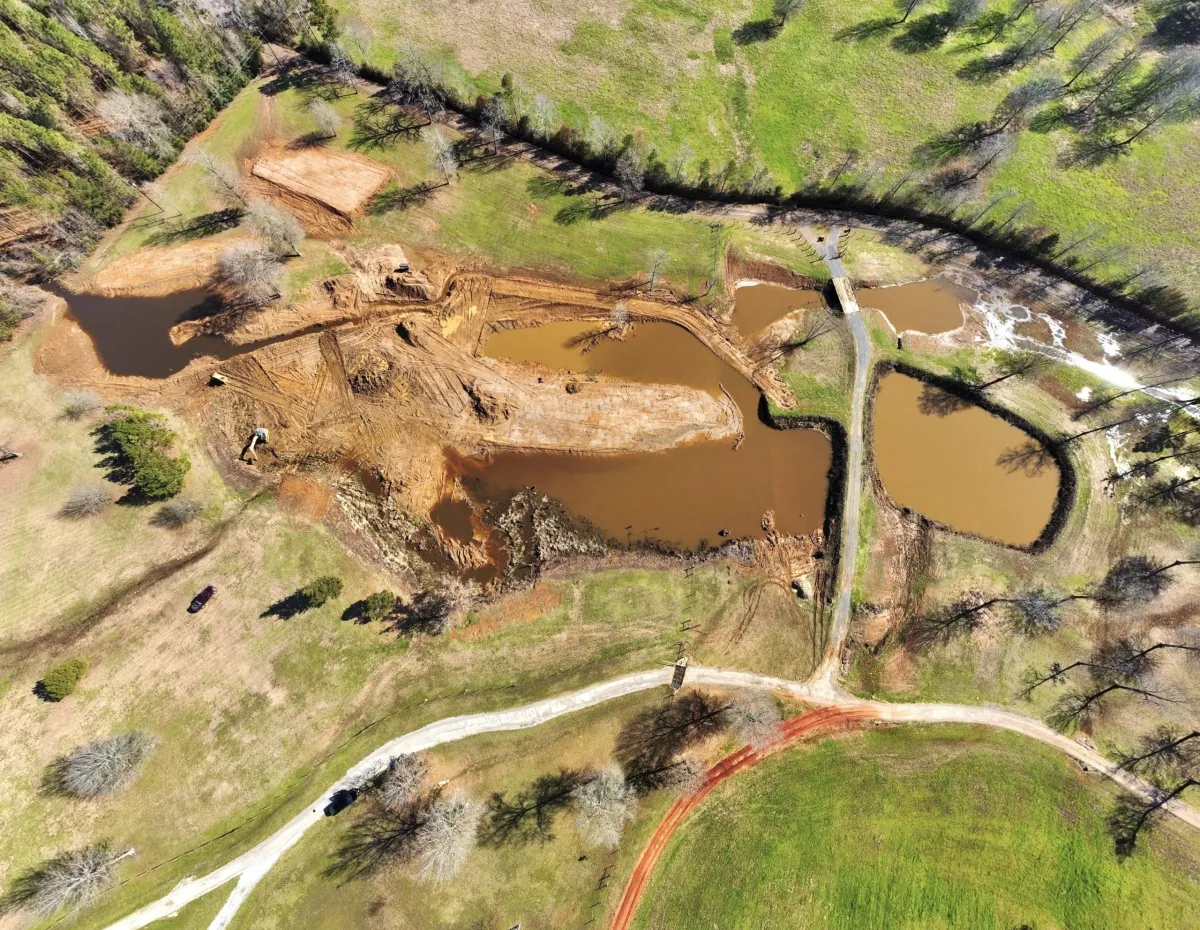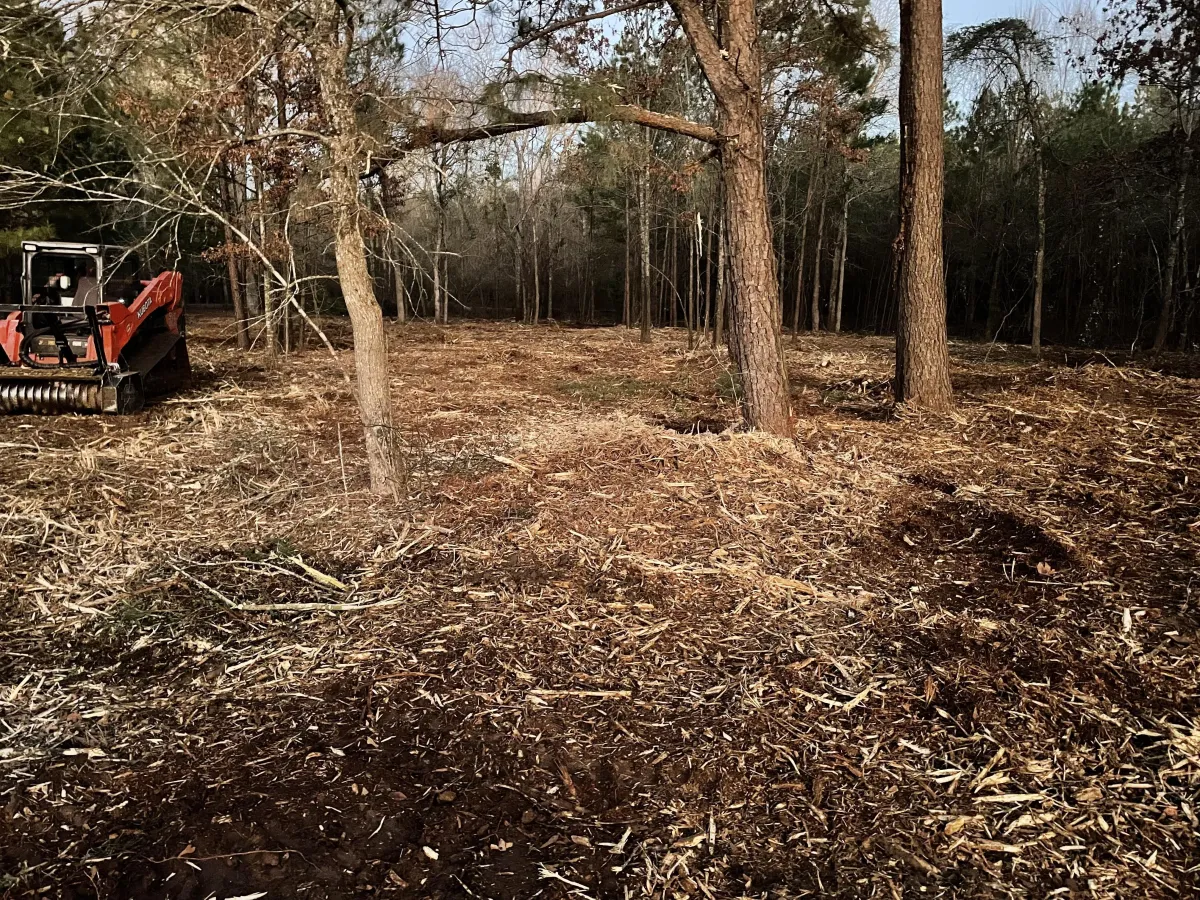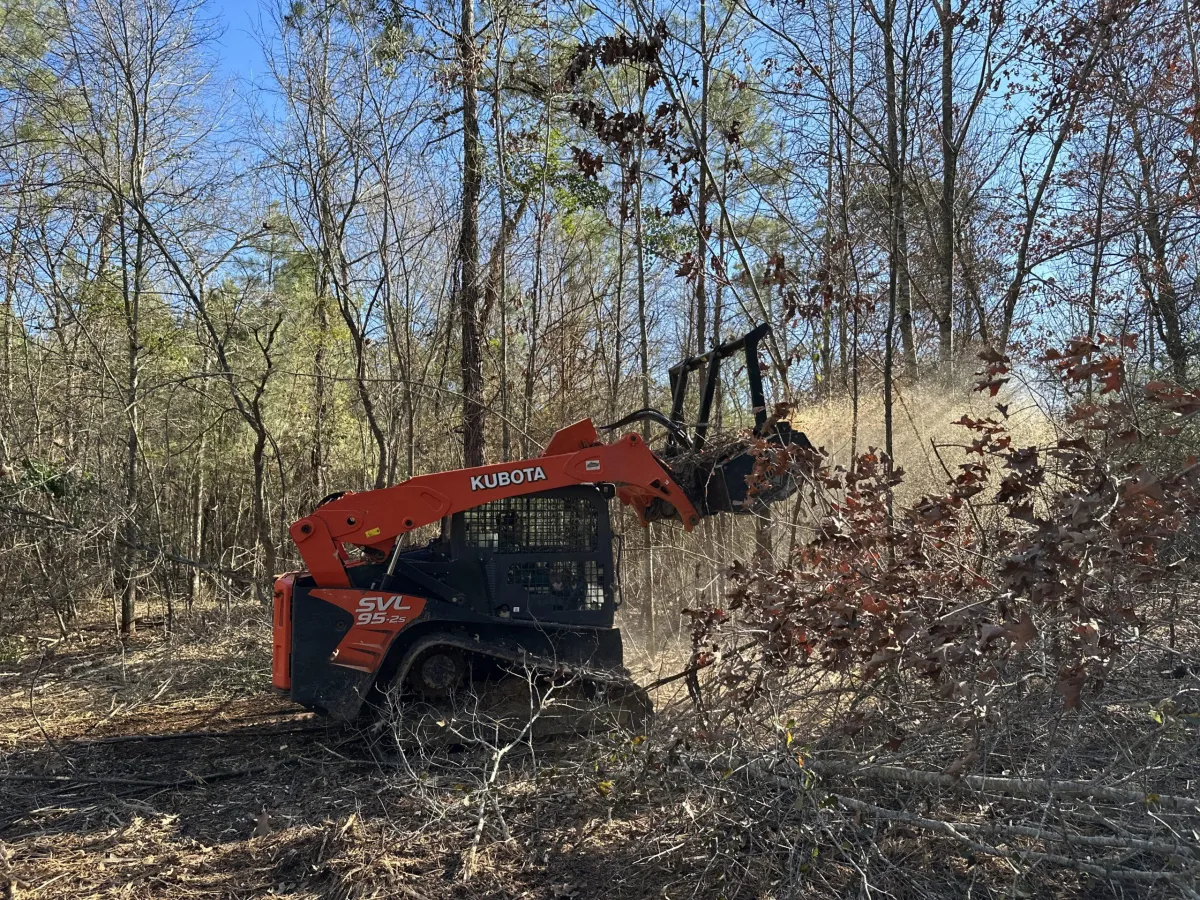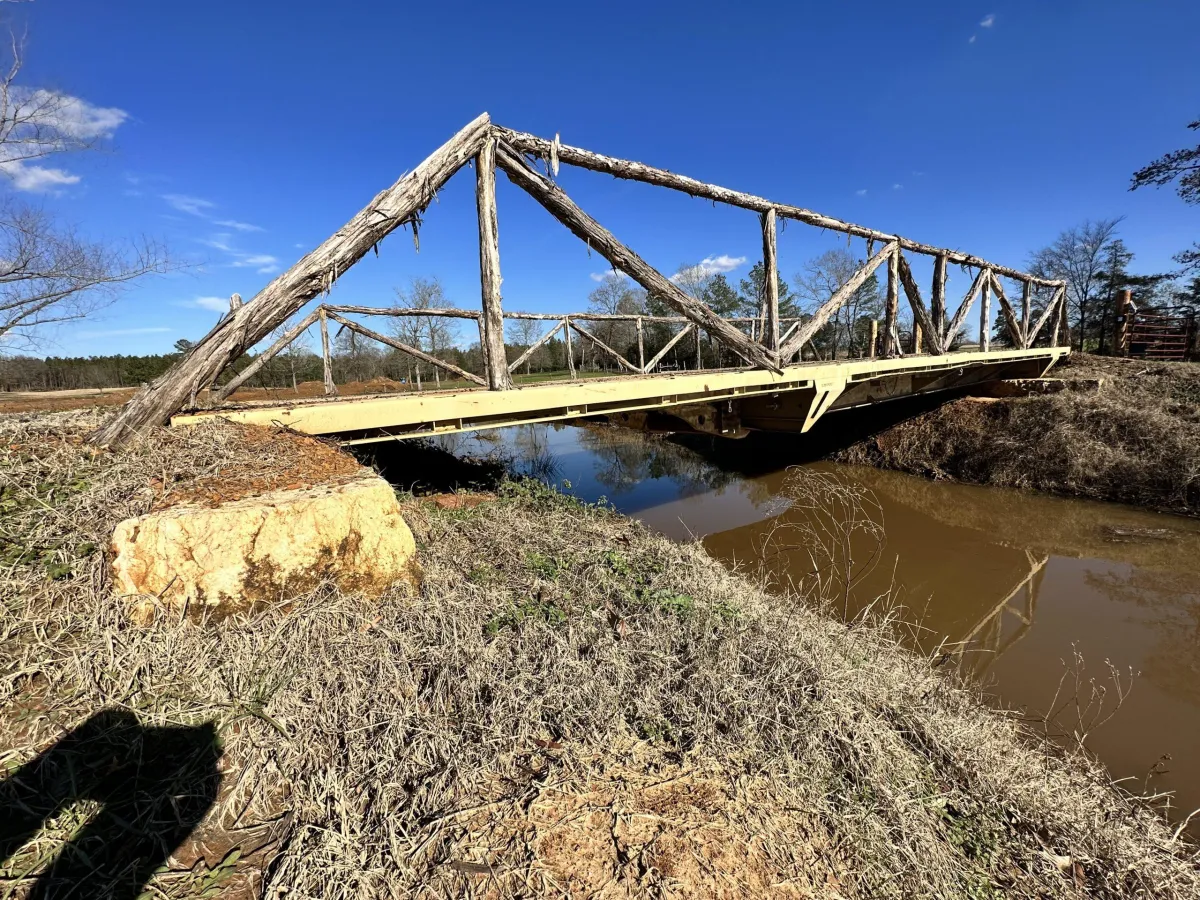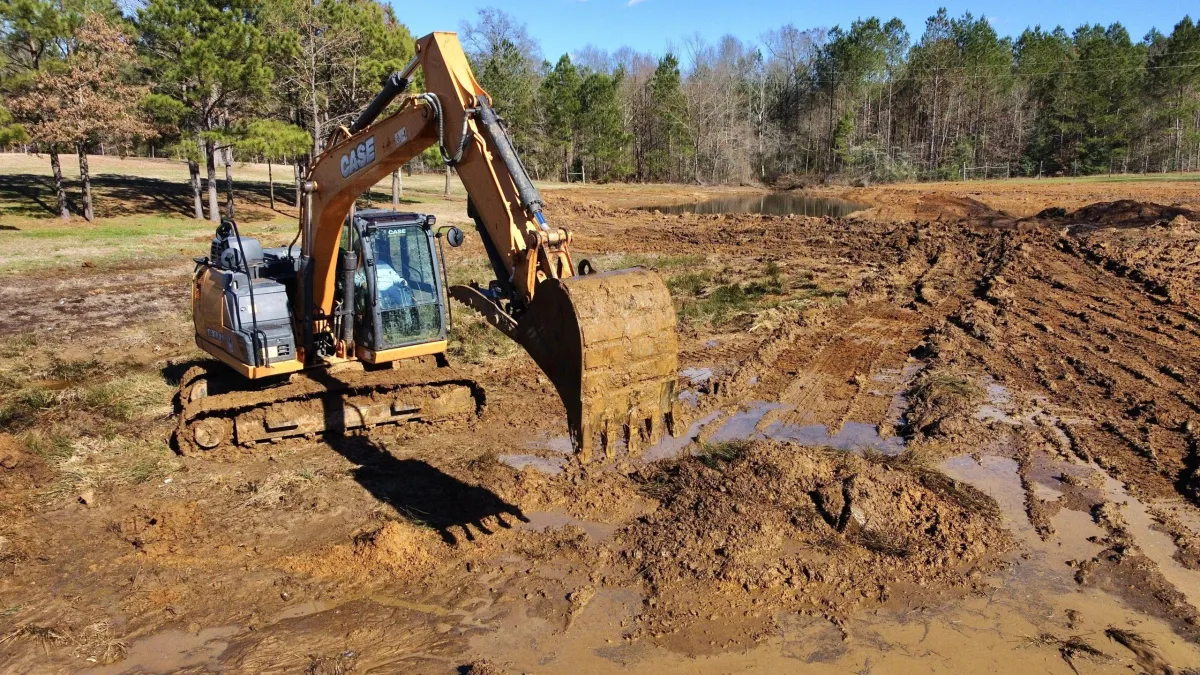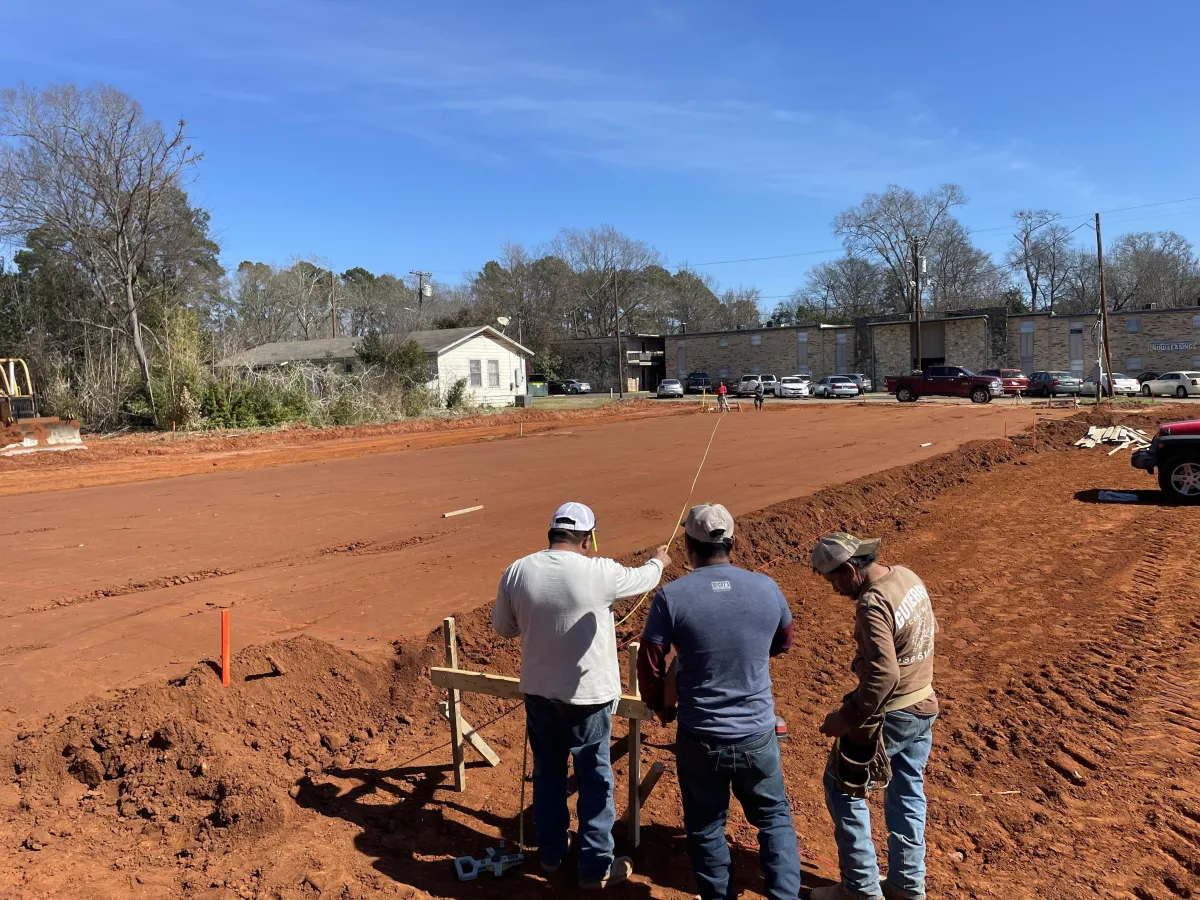Land Clearing 101
Questions you may have…
We’ve developed this page to answer customer’s questions received over the years.
If your question isn’t answered here, please let us know and we’d be happy to chat.
When embarking on a project we want you to have as much information as possible.
Even in Land Clearing it’s important to compare apples to apples.
Whether it’s cleaning/identifying property lines, clearing fence rows, one acre or forty acres, as a consumer you need to be informed.
"Land Clearing" is a generic term that can ultimately incorporate a lot of different processes. Here is a brief overview of what “Land Clearing” can involve:
Forestry Mulching is the grinding, chipping or simply “mowing” down small trees and underbrush. Think of this as bush hogging on steroids. Most of what we cut and clean up is more than a tractor and brush cutter can manage. It typically involves one or two passes over the area.
Finishing Mulching is very similar to Forestry Mulching but should include multiple passes, leaving a much finer, cleaner appearance. This type of mulching should leave the area easier to drive over, looking neat and clean. Typically, Finishing Mulching is best suited for thick underbrush and small timbers 6” or less.
A Bulldozer and Root Rake will not only remove all of the underbrush and small trees, but also uproot small brush and trees, preventing regrowth for a longer period of time. Unlike Finishing Mulching, this process is more invasive and will tear up the top of the soil a bit more. The brush will then need to eventually be mulched, buried or burned for removal. The dirt then can be smoothed out via the bulldozer as needed.
A Excavator / Bulldozer combo will remove all of the (selected) trees, roots, stumps etc. This is generally used for creating a building site where all organic materials are removed in preparation for solid building foundations for a house pad, road way, etc.)
So once you know exactly what type of Land Clearing you’re wanting, lets take a closer look into Mulching specifically.
What type of finished product are you looking for?
To achieve the finished product that you’re looking for depends on both the machine and the operator.
Here are two types of finished products:
Forestry Mulching vs Finish Mulching
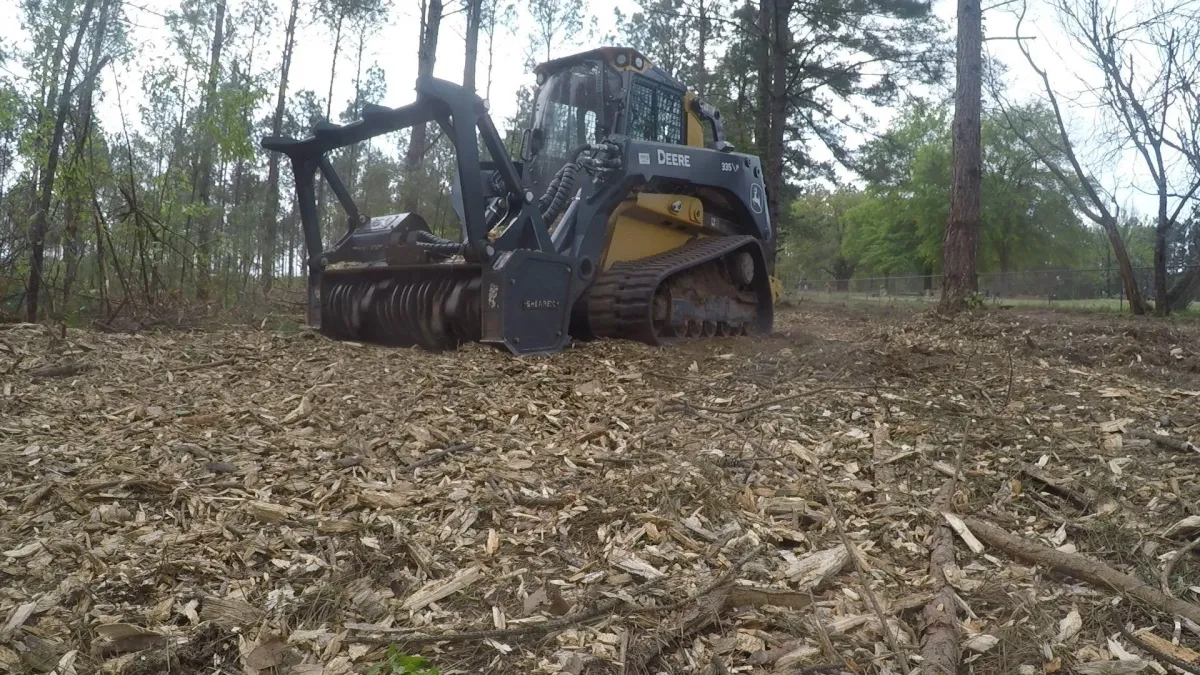
Forestry Mulching -
This type of mulching usually leaves larger chunks of wood and debris.
It is typically done with one pass. You may see this type of mulching along highways or land that has been harvested for the timber. It is done with a large, dedicated mulching machine. This typically runs about $3,500 day with an operator and they usually have minimum requirements. We can also do this type of mulching but most prefer the look and results of Finishing Mulching.
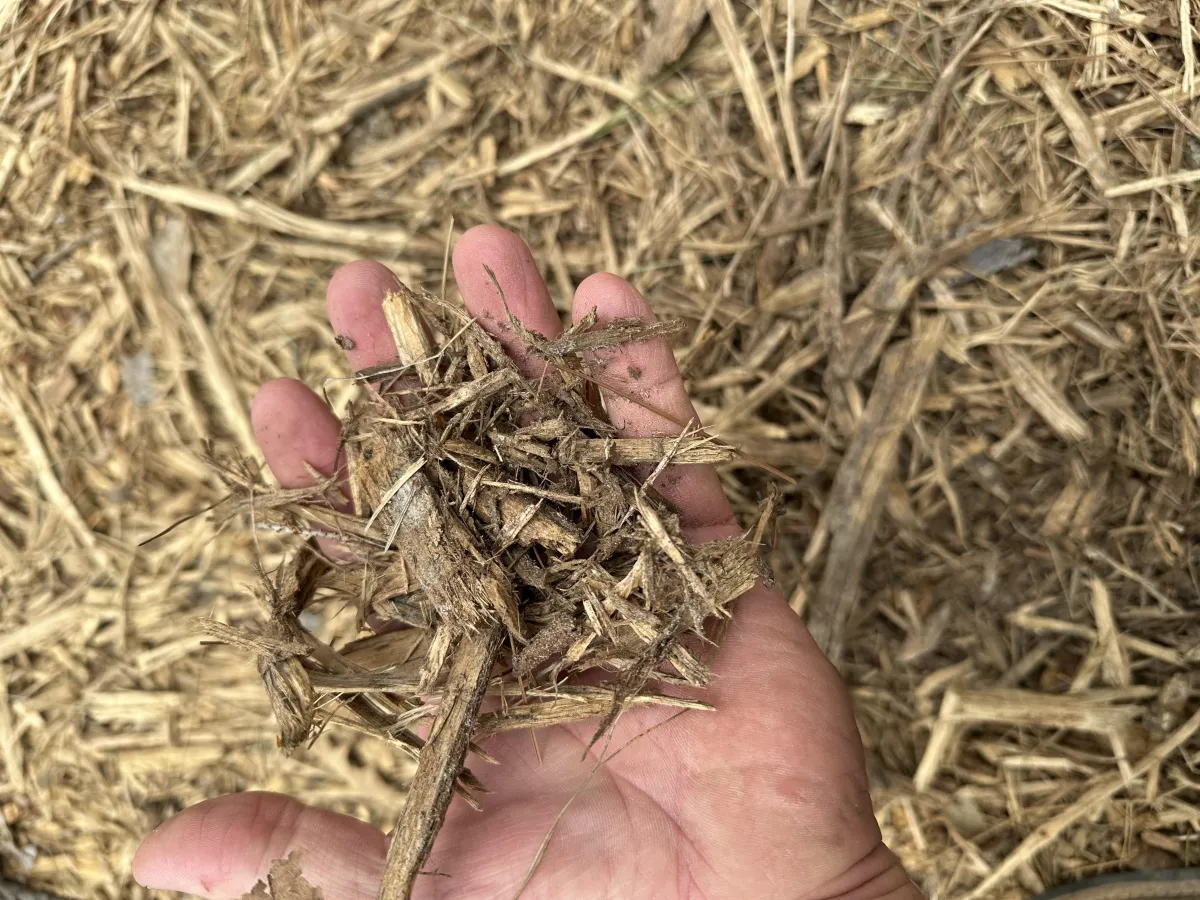
Finish Mulching -
Our Finishing Mulching uses a smaller, specific equipment and tooling to give the landowner a more consistent and finished product.
We typically take more time to do the mulching and are more concerned with the finished product. We do not rush through the mulching process. Hence the reason we typically do not charge by the hour.
Skid Steer Mulchers leave less damage to the land from tire ruts. Also, our machine runs at a higher horse power than most in its size. 120 hp vs 95hp.
Why does this matter?
The extra HP and hydraulic flow rate allows for faster and finer mulching results. We prefer the John Deere skid steer 120 hp for this reason.
In conjunction with this we run a Shearex mulching head and knives. Over the years (and trying different mulching heads) we have found that the Shearex outperforms other types. The type of knives doing the cutting makes a difference.
Carbide blades/teeth are like hitting a tree with a hammer. It takes a lot of force to break down the tree in that manner, which is why these are usually reserved for larger dedicated machines with 450+HP. Knives on the other hand, do as they suggest and simply cut the tree into smaller chips. The more passes you make over the mulched area, the finer mulch product you will have.
Well…I can find cheaper mulchers on Facebook!
Yes you can!
But go back to what you’ve just learned.
What kind of results do you want?
We do not rush through the mulching process.
Hence the reason we do not charge by the hour as mentioned previously. If you’re just wanting a quick mulch job (one pass) we can do that.
We just want to make sure you understand what type of finished product you will be left with.
How big of a tree can you mulch?
No tree is too large!
However, large trees may not be feasible or economical for finish mulching. Therefore we may suggest cutting and hauling off or burning.
This will be discussed with the customer prior to work as to what trees to save, what trees to cut, what stumps removed, etc. Some trees, say for instance that are tall (40’-50’) but have a smaller diameter (10” or less) are too dangerous to mulch without falling back onto the machine and operator. However, we can cut these trees and then mulch in place for clean up.
Quick Example:
A couple just purchased a 10 acres tract of land and are wanting to build a home within the next year or so. They like the “lay of the land” or the location, but it is vastly overgrown and has a lot of underbrush making it very difficult to navigate or do much layout/planning.
Forestry Mulching would quickly remove the underbrush and small trees allowing better access and visibility for the layout and planning of a new home.
After an initial mulching, we can then plan on what (if any) larger trees need to be removed in order to create a building site (1-2 acres cleared) and possible roadway or access to the interior of the property.
Site Preparation
What is involved in creating a building pad?
A lot! Creating a solid foundation for a building or mobile home takes more than simply spreading some red dirt.
A proper foundation pad removes all top soil and organic material such as roots, debris, etc. That dirt is then replaced with a clean clay/sand soil mixture that has some plasticity and compact-ability.
Foundation pads requiring higher lifts (layers of 6”) will require compacting in between each lift to ensure that the soil is compacted properly. Building pad soil should be compacted to 93-95%. This is often measured using a complicated process reserved for commercial sites. A simple test or determination is to examine the tire marks of a loaded dump truck (~ 50,000 lbs.) as driven over the site. Tires should not leave more than 1/2-3/4” depression (this process is known as Roll Off or Proof Roll test and is often used on commercial sites as well).
Dirt is dirt right?
NO! It’s not uncommon for dirt to be chosen simply based on color vs. actual composition. What the dirt is comprised of makes a HUGE difference. A clay/sand soil mixture that has some plasticity and compact-able will provide the best base for a solid foundation.
Does the "Lay of the Land” matter when considering where I want to build my house?
Yes! If the building site is not level, you may still build the house of your dreams, but additional preparation and planning into the foundation will certainly be a consideration and will usually involve additional costs and materials. House pads that are 2’-3’ (our more) out of level on one end can possibly cost $15K-$20K in dirt alone, not to mention machine and site prep time for the overall foundation. Also, keep in mind erosion and natural water flow as it may play a BIG part in the future landscaping or building structure integrity.
Pond Construction:
Can I just dig a hole so I can collect water?
No! Unfortunately, ponds are not created effectively this way. Building a good pond involves planning, excavation and some soil testing. The type of soil, size, depth and intake is extremely important in these hot Texas summers. A small, relatively shallow pond in our Texas sun will evaporate with little rain and no runoff.Building larger ponds may involve removal of tree stumps and overflow prevention.
Road Construction:
Can you just put some rock on my road?
Yes, but before we do, we prefer to have a consultation to better understand your needs.
1.What do you want to achieve or fix?
Determine the location and existing soil type.
Determine any water flow issues.
If the current site is sand or sandy loam soil, do you need to add select fill (clay/sand mixture) to stabilize the soil to support the rock?
2.What type of material will best fix the issue?
We don’t want you to throw your money at a problem and several months down the road be right back to where you started.
East Texas soils can eat rock quickly without proper preparation.
What do I need to consider with “road construction”?
First, determine the location and existing soil type. If the current site is sand or sandy loam soil, you will want to add select fill (clay/sand mixture) to stabilize the soil to support the rock.Are there any water issues? If so, adding a culvert might help protect your road from washout. Also, we “crown” the road to aid in the dispersement of rain water.Your road will only be as good as the prep work that goes into it.
What type of rock do I need?
SB2 / Granite Base: This is one of the more common types of rock used in E. Texas. It is comprised of crushed granite 3/4”-fine creating a base rock that compacts well with proper installation. It is grayish in color and doesn’t offer much “dusting” when dry. Cost $$
Limestone Base: This is also a common road base used throughout East Texas. It is simply Limestone rock crushed. It is usually 3/4” - fine as well. It too offers good compaction, but will often create a fine dust when dry. It is white in color. Cost $$
Asphalt Millings: This is asphalt that has been reclaimed during road highway construction. There are several grades of asphalt millings, although none of them are formally categorized (that we are aware). Most of the millings are super fine and will compact well during installation or with a drum compactor, leaving a finish similar to new asphalt paving - but not as solid. There is usually some loose rock on the surface, but a solid foundation below. Some of the more course millings do not compact as well and will leave a “gravel” like appearance or texture. Color is dark grey or black. Cost $$$
Crushed Concrete: Again, you can find several grades of crushed concrete - from larger rock size to fine base material. The Crushed Concrete we sell is 3/4” - fine and does not have any metal wire or rebar in the mix. Some suppliers aren’t as particular about removing the wire or rebar and this can ultimately cause issues if used on a driveway. Cost $$
Oversized Crushed Concrete: This is 2”- 4” sized rock and works well for a base material in soft soils. It is also often used to prevent soil erosion in high water areas. This material will be rough to drive over unless a finer material is used on top. Cost $$
Gravel: There are a couple types of gravel available in East Texas. The most common is washed stone out of the Trinity River. This is small rocks 1/4” or smaller. This product does not compact well unless you put down a significant amount and use a drum compactor. Even then, the surface will still be loose. It does make a very decorative entrance. Cost $
Another type of East Texas gravel is Iron Ore. Similar in size and texture as pea gravel. This product is found naturally across the East Texas region. It was commonly used on a lot of county roads in the past and makes a decent, low cost option for most driveways. Cost $
Our desire is to give our customer options when it comes to their project…whatever that project may be. Integrity is of utmost importance.
We will be punctual, honest, and fair.
We treat each project as if it were our own!
Our Simple Price Guide
NFRC Pricing Guide
Ponds Starting @ $ 9,000.00
Forestry / Finishing Mulching Starting @ $ 2,700.00
Land Clearing Starting @ $ 2,500.00
DAILY EXCAVATION RATES
115 HP Bulldozer | $ 2,500.00 per day
15 Ton Class Excavator | $ 2,750.00 per day
120 HP Skid Steer with Mulching Head | $ 2,700.00 per day
WEEKLY EXCAVATION RATES
115 HP Bulldozer | $ 8,750.00 per week
15 Ton Class Excavator | $ 8,900.00 per week
120 HP Skid Steer w/ Mulching Head | $ 11,000.00 per week
We Are Currently Serving In These Counties.
Rusk County
Nacogdoches County
Gregg County
Smith County
Cherokee County
Angelina County
Shelby County
Panola County
TESTIMONIALS
What others are saying
Business Information:
8-5 Monday-Friday

Social:
Copyright 2025 North Forty Ranch Construction - Powered By Jared K Design


